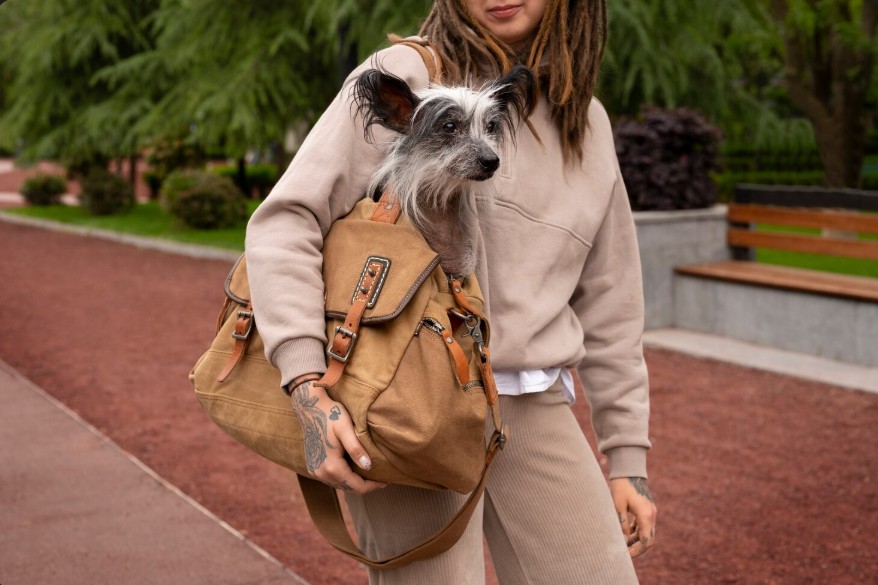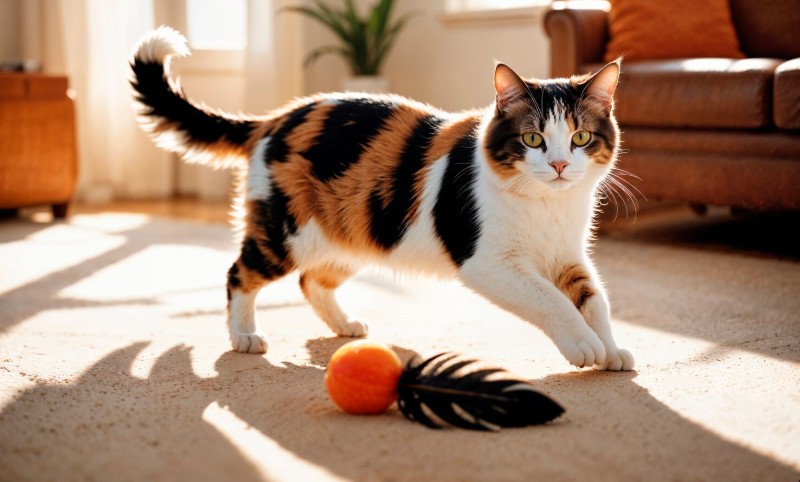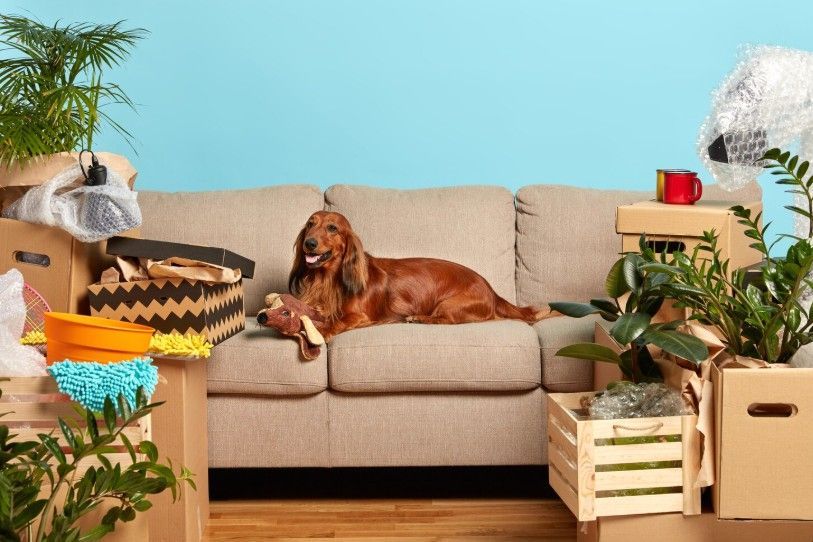 The moving truck is loaded, boxes are labeled, and you’re ready to go. But as you look at your anxious pet, one question hits hard: Will they be okay?
The moving truck is loaded, boxes are labeled, and you’re ready to go. But as you look at your anxious pet, one question hits hard: Will they be okay?
Moving is one of the most stressful events in a pet’s life. Their entire world—smells, sounds, routines, safe spaces—disappears overnight. But with the right preparation, you can make the journey safe and calm.
This guide covers every species, transport method, and timeline you need. Whether you’re driving your dog across town or flying your bird across the country, you’ll know exactly what to do.
The 5 Non-Negotiable Safety Rules
1. Welfare Beats Convenience—Always
Temperature control, ventilation, and secure containment aren’t optional. If weather is dangerous, delay your trip. Speed never justifies cutting safety corners.
2. Make the Carrier Familiar Early
Don’t let moving day be your pet’s first time in a carrier. Start introducing it 4 weeks before with daily 5-minute sessions: feed inside, close the door briefly, take short car rides.
3. Minimize Chaos and Handoffs
Every transfer is a risk. Keep the same handler, same routine, same container door-to-door. Less transition = less stress.
4. Protect Their Routine
Keep feeding times, walks, and sleep patterns identical. When everything else changes, routine tells your pet: “We’re okay.”
5. Watch for Stress Signals
Dogs & cats: Excessive panting, trembling, hiding, loss of appetite Birds: Feather plucking, freezing, refusing food Reptiles: Defensive postures, temperature avoidance Small mammals: Frantic behavior, over-grooming
When you see these, reduce stimulation and restore calm.
Timeline (6 Weeks → Arrival)
T-6 to 4 weeks (Before)
- Book your transport (prefer direct routes/flights).
- Vet exam; confirm microchip/ID details; gather records.
- Daily carrier/cage sessions (2–5 minutes): door open → brief closed → pick up → short car rides.
- Habitat species plan: travel cage for birds; double-bag/insulated box for fish; ventilated tubs + heat/cool strategy for reptiles; cool, moist containers for amphibians.
T-4 to 2 weeks (Before)
- Fit the crate/kennel so the animal can stand, turn, and lie down naturally.
- Gradually extend crate sessions and car practice; introduce low-volume travel sounds.
- Stage a safe room at origin and destination (quiet, closable, essentials inside).
T-7 days to Move Day (Before)
- Pack the pet go-bag (see checklist).
- Label carrier with name, contacts, and med/feeding notes.
- Reconfirm operator rules (airline/ferry/train), fees, and weather policies.
- Ask your helpers (or pet-aware movers) to stage boxes away from the pet route and post the “Do not open—pets inside” sign on move morning.
Move Day (During)
- Keep pets in the safe room; post a “Do not open—pets inside” sign.
- Load animals last; supervise constantly; verify ID.
- No sedation unless prescribed specifically for this trip.
Arrival (After)
- Set up the animal space before unpacking.
- Re-establish schedule within 24 hours.
- Monitor appetite, elimination, thermoregulation (for ectotherms), and behavior; contact a vet if off baseline persists.
Choosing Your Transport Mode
Coordinate with helpers/crew so there’s a clear, quiet path from the safe room to the vehicle when it’s time to leave.
 Car — Before / During / After
Car — Before / During / After
Before: Crash-tested crate or harness; secure carriers so they can’t slide or tip. Plan shaded, ventilated stops.
During: Never leave animals in parked cars. Keep steady airflow, offer small/frequent water, use familiar bedding. Prey species (birds/small mammals) do best with partial visual cover and lower noise.
After: Unload directly to a quiet room; water first, then small meals; resume routine the same day.
Air (In-Cabin) — Before / During / After
Before: Check carrier dimensions and species rules; prefer direct flights; note temperature/breed restrictions.
Have a helper/foreman keep the carrier, documents, and go-bag at the front door so you can walk straight out once the house is quiet.
During: Arrive early; place absorbent liner in carrier; add ID on the outside; avoid sedatives unless specifically prescribed.
After: Rehydrate and settle in a low-stimulus room; restore routine quickly.
Air (Cargo) — Before / During / After
Before: IATA-style hard kennel with metal hardware; labels on all sides; frozen water bowl or fixed cup; obey feeding cutoffs.
During: Avoid extreme temperatures and long layovers; confirm chain-of-custody at check-in.
After: Quick health/behavior check; quiet recovery time; water before food.
Ferry & Train — Before / During / After
Before: Confirm operator rules (crate, muzzle, pet cabins/cars).
During: Keep carriers stable, away from drafts and high-noise areas; for birds, cover 2–3 sides.
After: Dry/warm setup; resume normal feeding and photoperiod promptly.
Crates, Carriers & Habitat Travel Setups
Sizing & Hardware
- Animal must stand, turn, and lie down naturally.
- Test latches; for cargo/rough handling, use rigid hardware; add permitted backups (ties/bolts).
Desensitization Plan
- Feed in the carrier; close the door briefly; carry the crate; short drives; lengthen sessions 10–20% only when calm.
Labeling & Travel Kit
- On the carrier: animal name, your contacts, destination contacts, med timing, “Live Animal.”
- Inside: absorbent liner, fixed water container/gel, a familiar cloth/toy if safe.
Habitat Specifics
Birds: Travel cage with stable perch; remove heavy swings/toys; partially cover; protect from drafts.
Fish: Species-appropriate short fast; double-bag with rubber bands in an insulated box; keep temperature stable; carry damp filter media to seed the tank on arrival.
Reptiles: Ventilated tubs with air holes; paper towel substrate; heat/cool packs outside the inner tub; no loose décor.
Amphibians: Cool, moist, low light; ventilated container with damp, clean substrate; avoid temperature swings; no heat packs.
Small mammals: Solid-bottom carriers; chew-proof water; absorbent bedding; a hide for security.
 Health, Documents & Safety
Health, Documents & Safety
Domestic Essentials
- Recent exam; vaccines/parasite control current where applicable.
- Microchip registered to new contact details.
- Paper + digital copies of records in the go-bag.
International Basics
- ISO-standard microchip, rabies certificate timing, health certificate, import permits, and (if applicable) quarantine.
- Verify destination/operator rules well in advance; timing errors are the most common failure point.
Medication & Feeding Timing
- Time doses to keep coverage during travel; carry meds in original packaging.
- Avoid heavy meals right before transit (species-dependent).
- Prioritize hydration on arrival; reintroduce full meals after animals settle.
Moving-Day Protocols
- Safe room: Quiet, ventilated, fully set up; single handler controls entries; door sign posted.
- Loading sequence: Furniture/boxes → doors closed → animal/carrier last. Pause carries if temperatures are unsafe.
- When helpers/crew load furniture first and the animal last, the safe room stays quiet and the handoff is under a minute.
- Contingencies: Have a plan for delays, missed connections, or weather—where the animal waits and how you’ll maintain temperature and calm.
Arrival & First 48 Hours
- Set up first: Litter/bed/bowls or habitat basics (heat/UVB/filters) before anything else.
- Routine reset: Feeding, walks, play, and (for ectotherms) lighting/heat cycles within 24 hours.
- Observe: Appetite, elimination, respiration, posture/thermoregulation, exploratory behavior. Call a vet if abnormalities persist or worsen.
Species Modules (General Guidance + Examples)
 Dogs & Cats
Dogs & Cats
Before: Confirm ID/microchip; fit crate/harness; short practice rides; pheromone aids optional.
During: Secure containment; predictable stops; calm handling; avoid overstimulation.
After: Safe room; gradual territory expansion; resume normal meal/walk/litter schedule; watch for stress markers (panting, pacing, hiding).
Birds
Before: Short travel-cage sessions; practice partial cover; acclimate to travel water bottle/cup.
During: Cover 2–3 sides; avoid drafts and loud zones; steady temperature.
After: Quiet perch height; normal photoperiod; reintroduce toys/social time gradually.
Fish (Aquarium)
Before: Prepare bags, rubber bands, insulated box, spare heater/thermometer; species-appropriate fast; save filter media damp.
During: Keep dark and insulated; minimize sloshing; maintain temperature.
After: Float bags to equalize temperature; drip acclimate as needed; rebuild tank with seeded media; monitor ammonia closely.
Reptiles
Before: Plan a heat gradient and test travel tubs; no loose feeders.
During: Insulated carrier; external heat/cool packs; monitor behavior as a proxy for thermoregulation.
After: Set enclosure first; verify temps/UVB; offer water; delay feeding until behavior normalizes.
Amphibians
Before: Moisture strategy; container rehearsals.
During: Cool, dark, moist conditions; minimal handling.
After: Dechlorinated water; stable temps; very gentle care until normal feeding resumes.
Small Mammals (rabbits, guinea pigs, hamsters, etc.)
Before: Carrier habituation; chew-proof water; safe chew for stress relief.
During: Quiet, steady ride; checks without opening in unsafe areas.
After: Fresh hay/greens (species-appropriate), a hide, low noise.
Special Cases
Seniors & medicated pets. Shorter travel legs, padded rests, dose timing, ramps for mobility; have a destination vet shortlisted.
Brachycephalic breeds. Prefer ground or in-cabin, cool temperatures, extra ventilation; avoid peak heat.
Highly anxious animals. Desensitization and enrichment plan; pheromones or vet-approved meds when warranted; keep the same handler.
Multi-pet logistics. Separate carriers; staggered loading/unloading; staged introductions; prevent resource guarding at destination.
Print-Friendly Checklists
Universal Go-Bag
- Food buffer (species-appropriate), water, medications & dosing tools
- Collapsible bowls, wipes, spare leash, waste bags
- Litter/liners or cage substrate; bedding with familiar scent
- Copies of records (paper + digital); recent photo; destination vet shortlist
Mode Add-Ons
- Car: rest-stop plan, window shades, seat anchors/straps
- Air (in-cabin): carrier dimension confirmation, absorbent liner, external labels, booking proof
- Air (cargo): IATA kennel with metal hardware, “Live Animal” labels, frozen water bowl, permitted ties
- Ferry/Train: operator rules, pet-friendly cabin/car reservation, partial carrier cover
Habitat Species Add-Ons
- Birds: cage cover, stable perch, towel
- Fish: bags, rubber bands, insulated box, spare heater/thermometer
- Reptiles: ventilated tubs, thermostat, heat/cool packs, temperature gun
- Amphibians: moist substrate, dechlorinated water, vented lid
- Small mammals: extra bedding, chew, water bottle, hide
🐾 Frequently Asked Questions
1️⃣ How do I prepare my pet for moving day?
Start weeks ahead by making the carrier familiar — short sessions, calm exposure, and treats inside. Keep their feeding and walk routines identical, and prepare a quiet “safe room” for move day.
2️⃣ Should I sedate my pet for travel?
Only if your veterinarian specifically prescribes it for the move. Sedation can increase risk, especially for air travel, so most pets do better with calm handling and gradual desensitization.
3️⃣ How can I keep my pet calm during the move?
Minimize noise and changes. Use familiar bedding, keep the same handler, and reduce handoffs. For anxious pets, try pheromone sprays or soothing covers on carriers.
4️⃣ What documents do I need when moving with pets?
For domestic moves: recent vet exam, vaccination records, and updated microchip details. For interstate or international moves: add import permits, rabies certificates, and health declarations as required.
5️⃣ How do I transport pets safely in a car?
Use a crash-tested crate or harness secured so it can’t slide or tip. Keep airflow steady, never leave pets in parked cars, and plan shaded, ventilated rest stops.
6️⃣ What should I do first after arriving at the new home?
Set up their habitat or safe room before unpacking. Restore feeding and play routines within 24 hours, monitor behavior and appetite, and contact a vet if stress signs persist.
Final Reminders
The three things that solve 90% of moving problems:
- Routine — Keep it consistent
- Temperature — Never compromise
- Containment — Always secure
Your pet doesn’t understand why their world is changing, but they trust you to keep them safe. With this preparation, you’re ready.
If coordinating doors, boxes, and timing on your own feels heavy, a pet-aware moving team can handle the logistics while you stay focused on your pet.
Safe travels. 🐾
For pet-specific medical advice, especially exotic species or health conditions, always consult your veterinarian.

 Car — Before / During / After
Car — Before / During / After Health, Documents & Safety
Health, Documents & Safety Dogs & Cats
Dogs & Cats


 Address
Address Phone
Phone Email
Email